FlowCon, France’s premier conference on software development flow and modern agility, recently hosted its 2025 edition, bringing together professionals from various organizational levels to discuss cutting-edge practices in team and product development.
I was very excited to come. I’d been wanting to attend for several years now. What made this experience even more special was sharing it with several colleagues from our Product team, many of whom were new to such events.
Among the many thought-provoking sessions, Matthew Philip’s talk on “Level Collapse” stood out by challenging our conventional wisdom about management structures.
The Middle Management Paradox
Traditional Perspective
We often view middle management through a critical lens, frequently associating it with micro-management and organizational inefficiency. The Peter Principle suggests that people in hierarchies tend to rise to their “level of incompetence,” creating potential organizational dysfunction.
[…] employees are promoted based on their success in previous jobs until they reach a level at which they are no longer competent, as skills in one job do not necessarily translate to another (Wikipedia)
The Level Collapse Phenomenon
Matthew introduces a more nuanced concept: “Level Collapse.” This phenomenon occurs when:
- Organizational layers become blurred
- Responsibilities overlap ineffectively
- Strategic and tactical decisions get mixed
- Management roles lose their distinct purpose
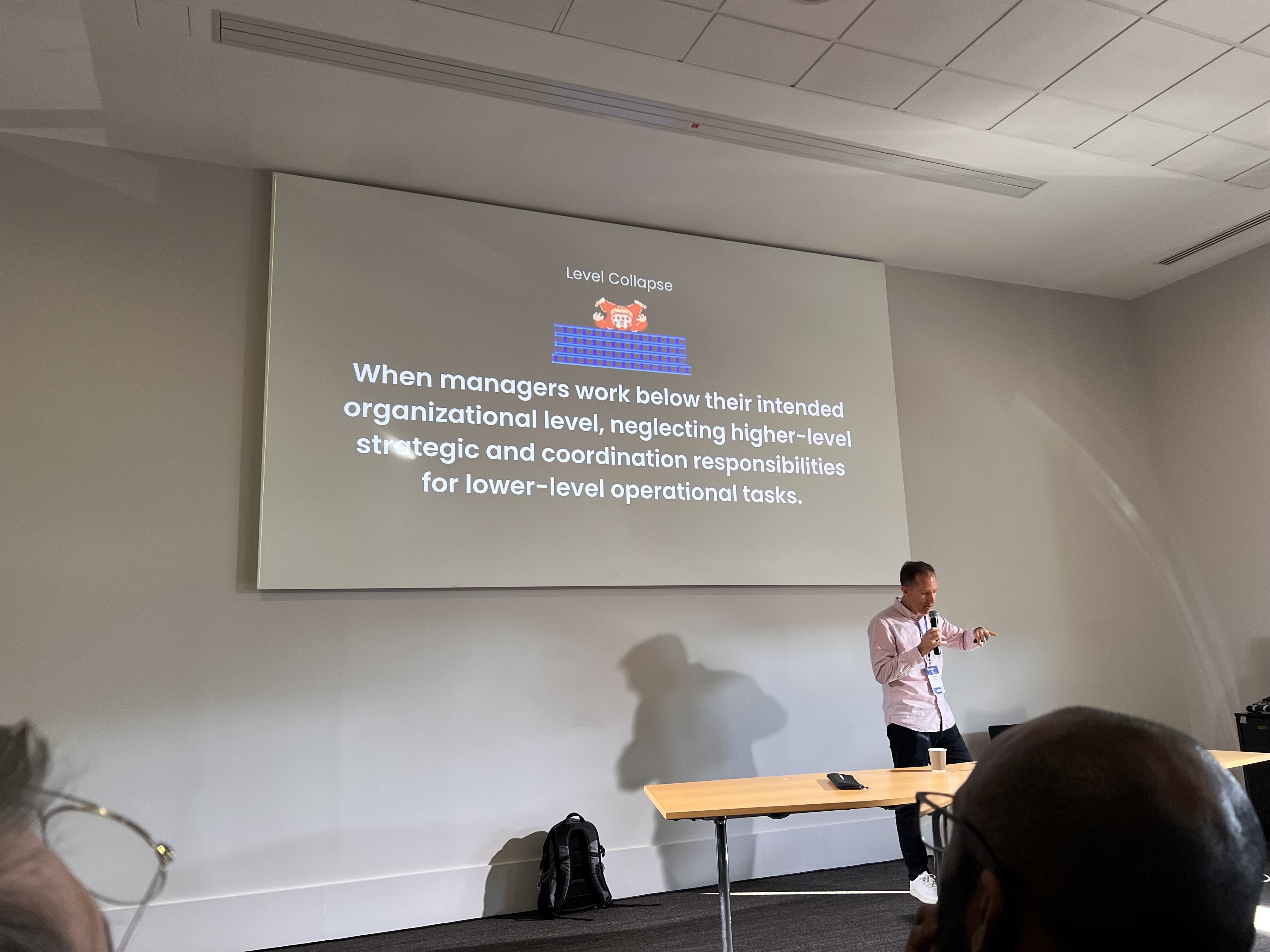
Beyond Simple Micro-management
Stress and Management Behavior
As introduction for this talk is the correlation between workplace stress and micro-management tendencies. Rather than being purely a personality trait, micro-management often emerges as a symptom of systemic (organizational) issues.
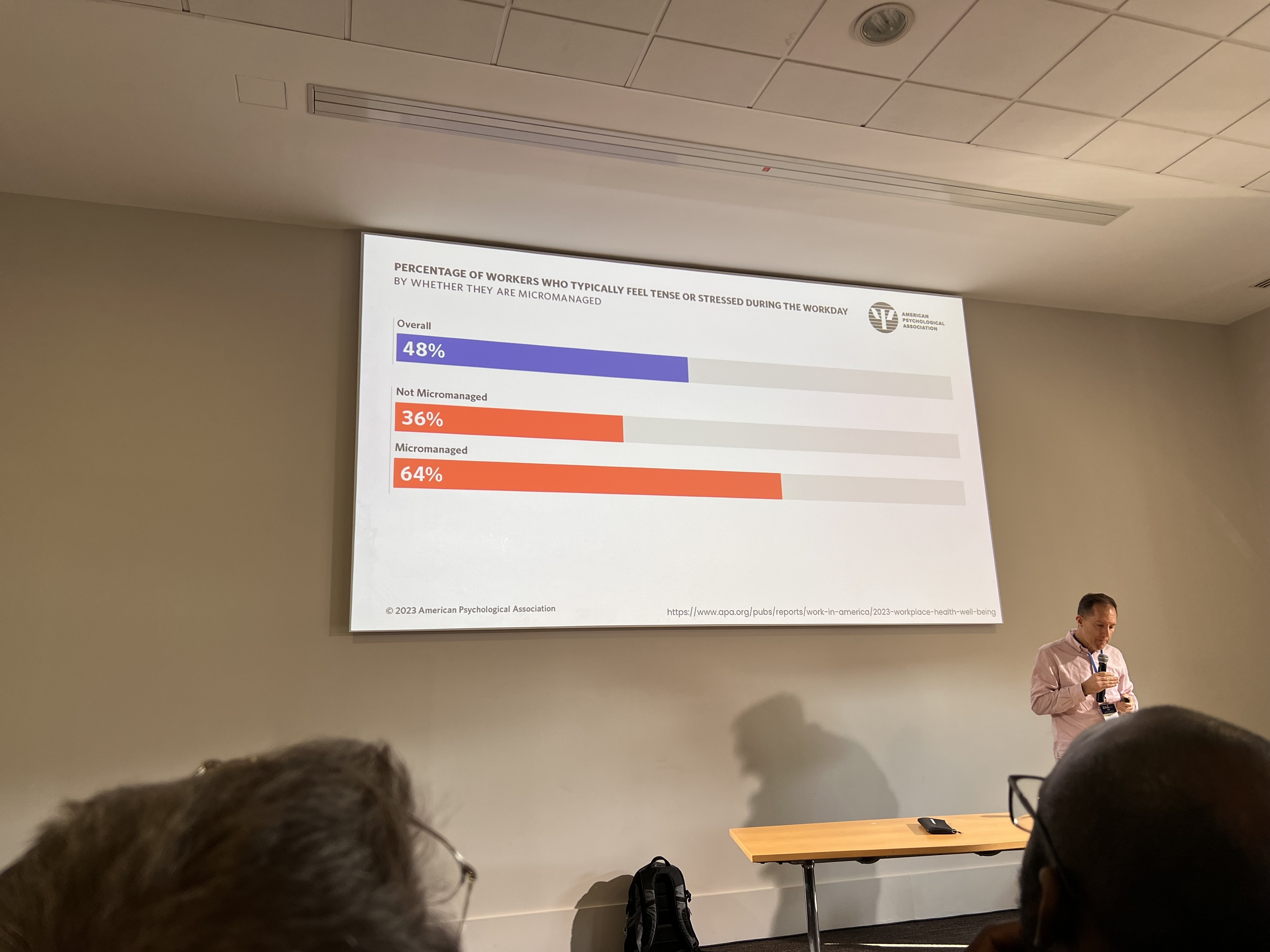
Rethinking Causality
While micro-management is often seen as a direct result of middle management structures, Matthew suggests this is an oversimplification. The relationship between organizational structure and management behavior is more complex and nuanced than previously thought.
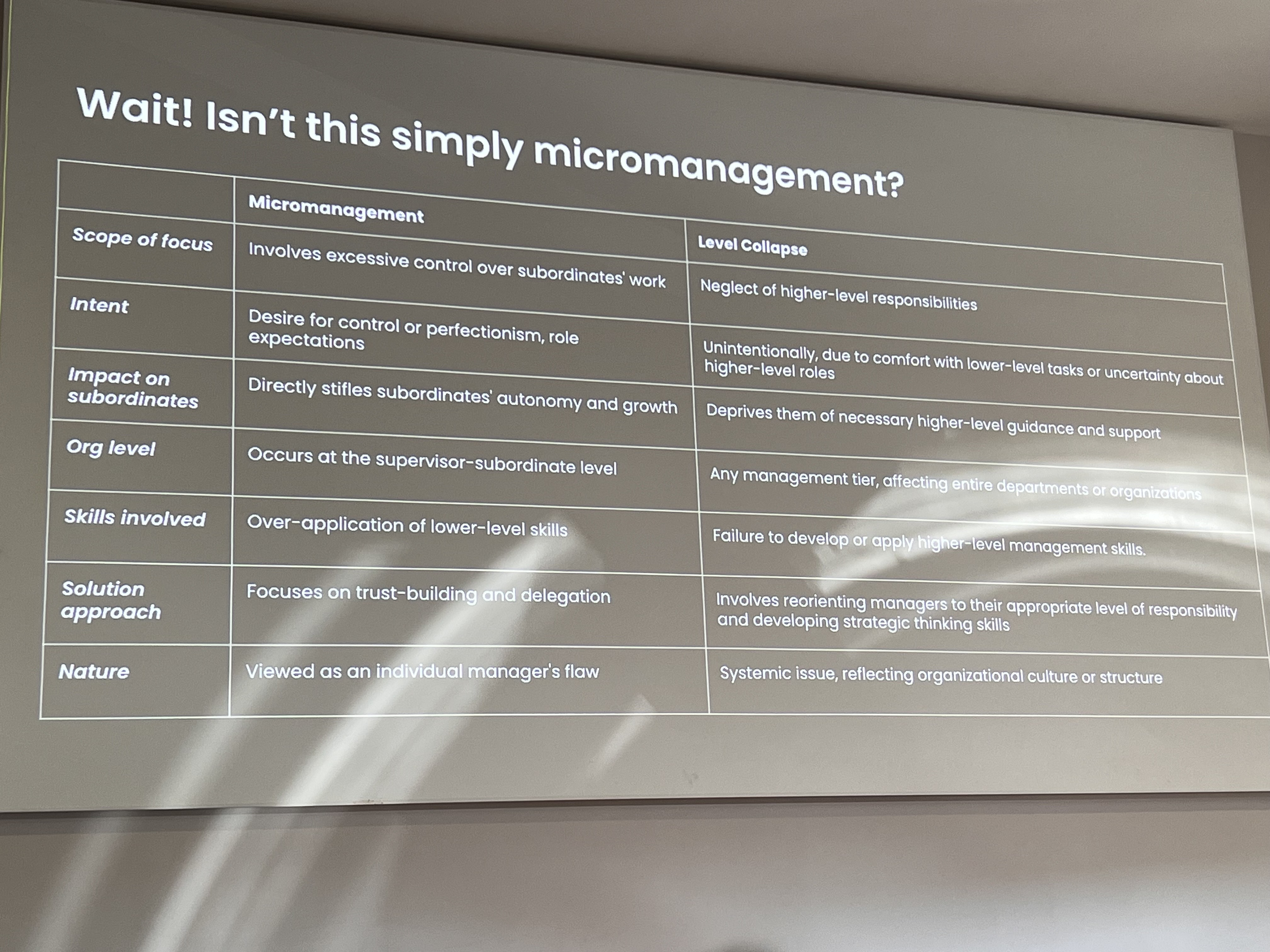
How about the people ?
Level collapse isn’t just an organizational phenomenon—it’s a deeply personal experience that affects individuals across all levels of the organization.
For Managers
- Identity Crisis: Struggling to define their value and role in the organization
- Pressure Cooker: Caught between strategic expectations and operational necessities
- Decision Fatigue: Constantly switching between strategic and tactical thinking
- Imposter Syndrome: Questioning their ability to perform effectively across multiple levels
For Team Members
- Mixed Signals: Receiving conflicting guidance from different organizational layers
- Autonomy Confusion: Unclear boundaries between self-direction and management oversight
- Strategic Disconnect: Difficulty connecting daily work to larger organizational goals
- Communication Overload: Managing interactions across collapsed organizational layers
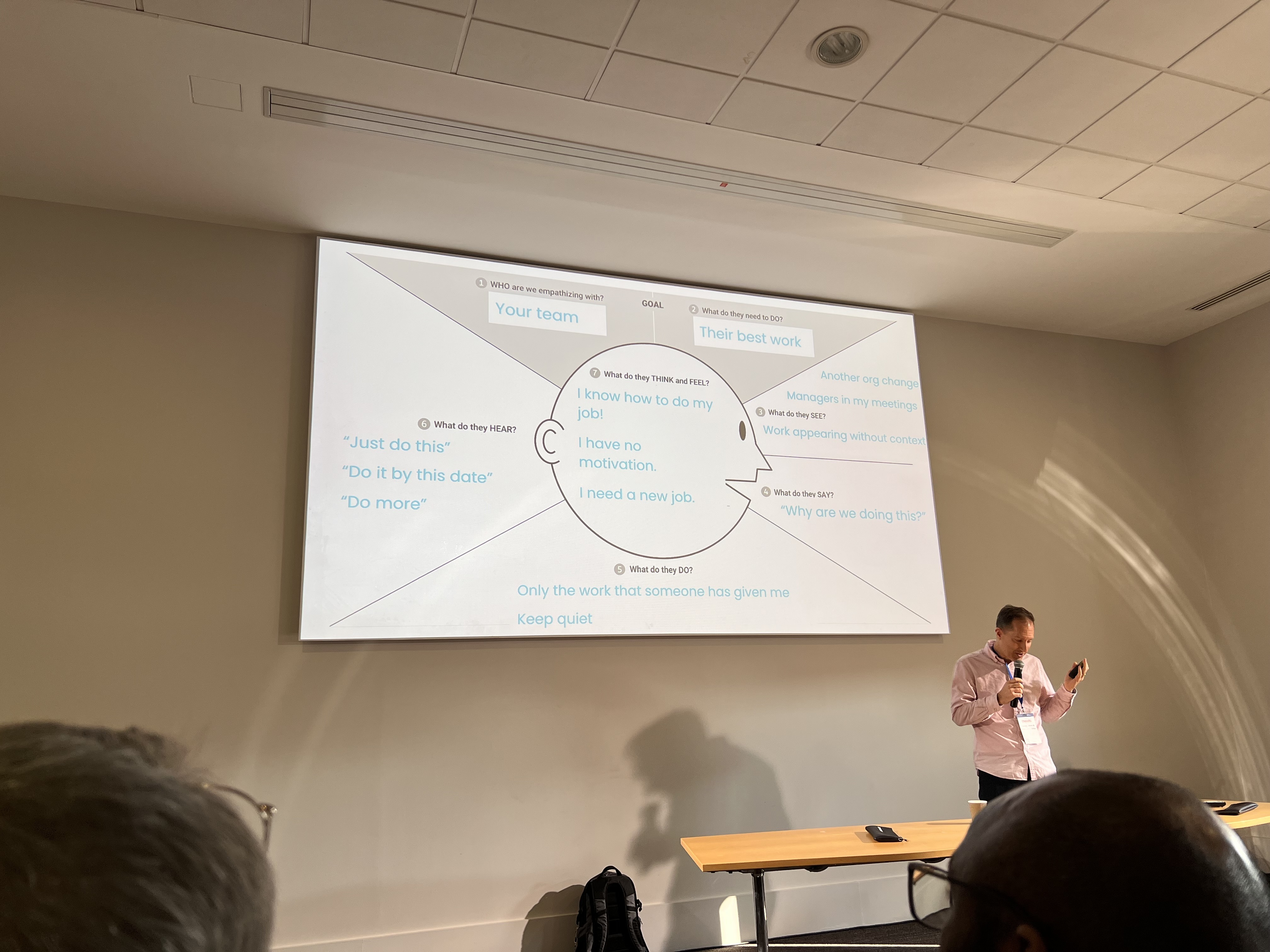
Rising Above Level Collapse
Through the talk and professional experience, Matthew shares with us some valuable heuristics through the Product Management lens.
From Control to Collaboration
Instead of micromanaging backlog priorities, establish collaborative decision-making frameworks based on economic outcomes. This shifts the focus from task management to value creation.
Customer Connection Over Approval Gates
Rather than acting as a gatekeeper for completed work, facilitate direct connections between development teams and customers. Let real user stories drive product evolution.
Vision-Driven Over Task-Driven
Move away from dictating specific solutions. Focus instead on clearly communicating the product vision and the underlying problems that need solving. This empowers teams to find innovative solutions.
Strategic Alignment Over Mechanical Goals
Replace arbitrary sprint goals with meaningful product principles. Ensure weekly planning activities align with broader strategic objectives.
Forward-Thinking Over Present Focus
Expand beyond immediate development concerns to strategic product planning. Balance current execution with future innovation.
Shared Success Over Process Adherence
Rather than enforcing rigid process compliance, define and share clear success metrics that align team efforts with business outcomes.
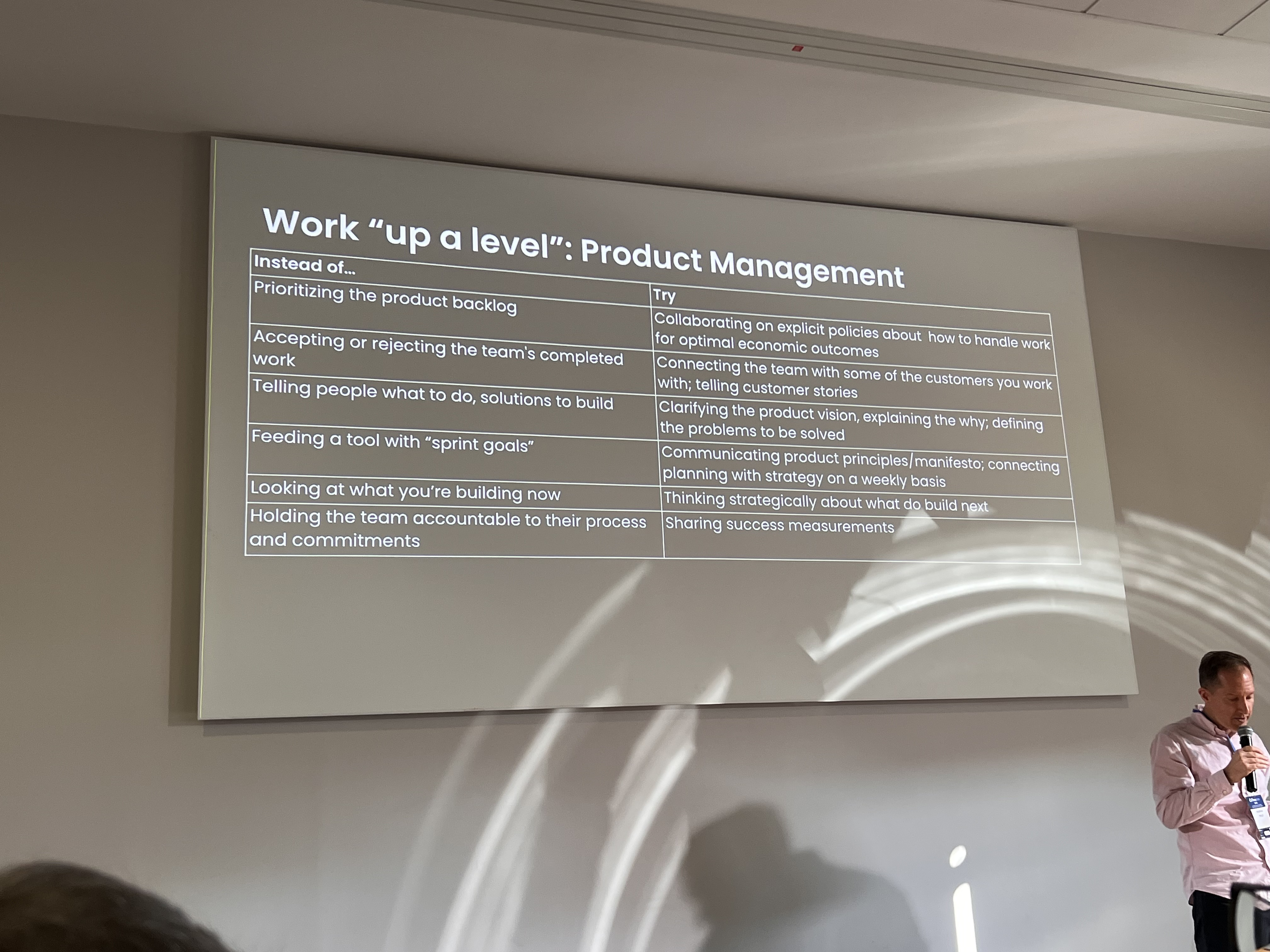
On a broader scope, what advice would you give?
My takes would be
Role Clarity
Define clear boundaries between strategic and operational responsibilities
Skill Translation
- Recognize that management requires different skills than individual contribution
- Invest in developing new competencies for transitioning roles
Organizational Refactoring
- Regular assessment of organizational structure
- Removal of unnecessary complexity
- Focus on creating environments where effective work can flourish
Personal Reflection
The presentation was particularly impactful due to its:
- Clear and relatable narrative structure
- Thought-provoking challenges to common assumptions
- Practical applications for various organizational contexts
While the speaker did reference a specific organizational approach, the core concepts stand independently valuable for any organization looking to improve its structure and effectiveness.
Conclusion
Level Collapse offers a fresh lens through which to view organizational challenges. Rather than simply condemning middle management, we’re invited to understand these phenomena as symptoms of deeper structural issues that can be addressed through thoughtful organizational design and conscious leadership practices.
